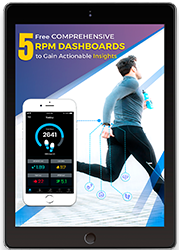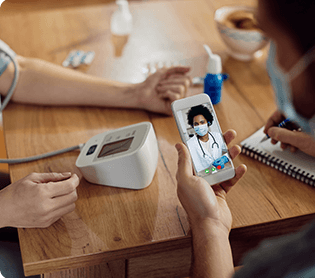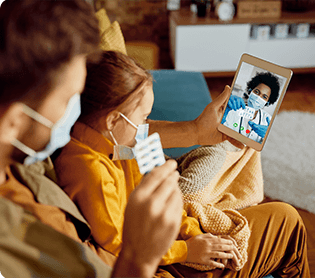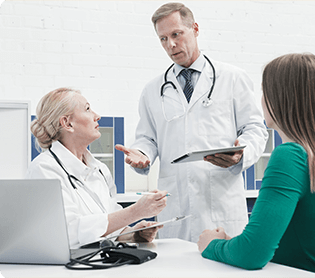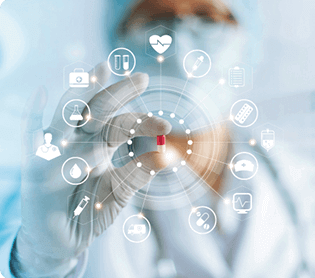As the U.S healthcare industry is slowly but surely moving towards a value-based care approach, using technological applications efficiently can help healthcare providers create a win-win situation. One such application is Remote Patient Monitoring (RPM). Read on to know exactly how advanced telehealth solutions can provide timely assistance to patients as well as help healthcare facilities save time, money, and gain credibility for the quality of its patient care services.
Introduction to Remote Patient Monitoring
- Remote Patient Monitoring (RPM) is a digital technology that obtains vital physiological data such as heart rate, blood pressure, blood sugar level, weight, etc. from the patients. The system then sends that information to the healthcare facility for evaluation and investigation.
- This benefits hospitals as they can track patients post-discharge and those with limited mobility, chronic illnesses, and senior patients. It is also convenient for the patients as they can receive uninterrupted professional medical treatment from the comfort of their homes.
- The focus on boosting healthcare infrastructure, rising geriatric population, and the need for living an independent life are some of the factors positively impacting the global RPM equipment market. According to ResearchAndMarkets.com, a significant rise is expected in this market from $1.5 billion in 2018 to $2.7 billion by 2022.

Applications of Remote Patient Monitoring
1. Early Identification of Diabetes
Diabetes is a chronic illness thatresults in high blood glucose levels. Patients with diabetes need to monitortheir blood pressure, temperature, weight, and blood sugar levels regularly toavoid complications like hyperglycemia, hypoglycemia, and diabetic foot ulcers.
Diabetes is one of the leading causes ofdeath in the United States, and the National Diabetes Statistics Report, 2017reported that approximately 1 in 10 Americans have diabetes, while 1 in 3Americans have prediabetes.
Prediabetes is a condition wherein the blood glucose levels are higher than the ideal range, but not high enough to be classified as diabetes. At this stage, it is still possible to normalize the blood sugar levels if the individual makes the necessary lifestyle changes, eats right, maintains a healthy weight, and includes moderate physical activity in his/her daily routine.

OSP has designed an AI-based predictive analytics solution that can diagnose if an individual has Type 2 Diabetes with the help of clinical data processed using advanced computational methods and algorithms. The system goes one step further and prescribes medication based on the diagnosis, and this timely treatment can positively impact patients’ health outcomes.
2. Prediction of Probability of Pneumonia
According to the American ThoracicSociety, approximately 1 million Americans are hospitalized annually due topneumonia, and an estimated 50,000 people die from this disease every year.Early detection and targeted antibiotic therapy can help prevent these deaths.
Though many tools exist for the diagnosisof pneumonia, radiologists still struggle to determine the extent and locationof the pneumonia infection in chest X-rays with complete accuracy.

OSP took on the challenge of building a deep learning-based model that can offer an accurate review of a chest radiograph (CXR) and use current prediction to enhance the quality and accuracy of chest X-ray predictions. A multi-layered convolutional neural network system designed using image analytics predicts the probability of pneumonia in an input chest X-ray image with better accuracy than predicted by the radiologists.

3. Management of Senior Care
Patient monitoring solutions in senior care and home health care management is a boon. The growing baby boomers and seniors population require an intuitive solution to monitor the different health concerns. Remote patient monitoring is a great digital health tool that enables providers to monitor the health status of elderly patients in real time.
Data from RPM wearables and platforms can help caregivers identify health concerns early and provide timely clinical interventions. This leads to better care outcomes and even proper management of chronic conditions.
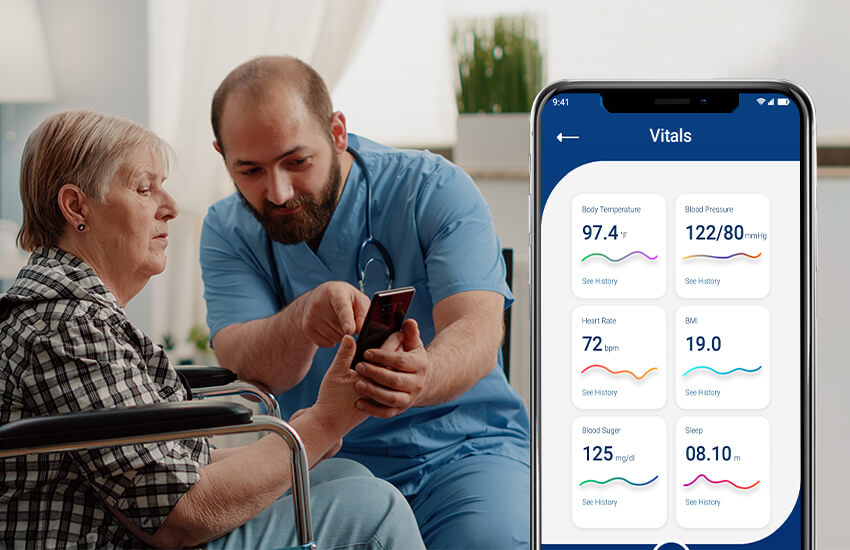
Also, in senior care homes or hospices, social isolation is a big fear among older adults. However, mHealth solutions like interactive community apps can help eliminate this social isolation by connecting seniors with peers and new friends. We at OSP can develop a customized RPM platform for senior care management. The platform can offer monitoring and virtual care capabilities with an interactive dashboard for data visualization.
4. Cardiac Monitoring
Cardiovascular disease is one of the leading causes of death in the USA. In 2020, CVD alone was responsible for 690.000 deaths. And it’s predicted that in the next few years, CVD cases will increase more. Healthcare providers can effectively manage and monitor cardiac cases with remote patient monitoring tools.
By leveraging wearable devices, mobile apps, and advanced telehealth solutions, providers and patients can effectively monitor vital signs and record other cardiac signs. These patient monitoring devices continuously track and share real-time data on a patient’s cardiac health.
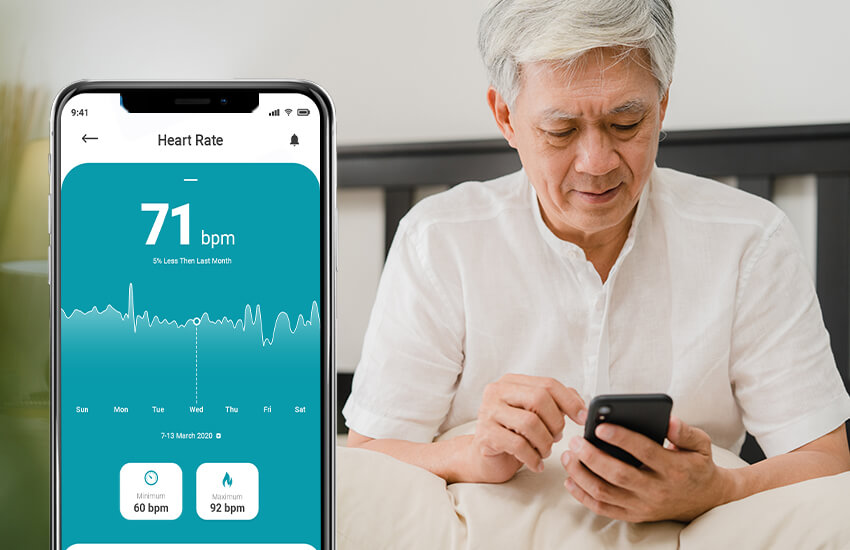
While RPM wearables and ECG monitoring features in wearables can track vitals and heart rates, mobile apps can help providers and patients view the data. And mobile apps can also share data to ensure timely intervention.
5. Health Equity
Health Equity is a concerning challenge that persists in the healthcare industry. Marginalized or rural areas often don’t receive timely or specialized care. However, remote patient monitoring solutions can change this scenario.
With RPM platforms and advanced telehealth solutions, health equity seems achievable. These solutions can improve access to care so that rural communities or underserved areas can easily get quality care. Some RPM solutions also remove the language barrier with translation-based services, which ensures care is accessible to non-native patients.
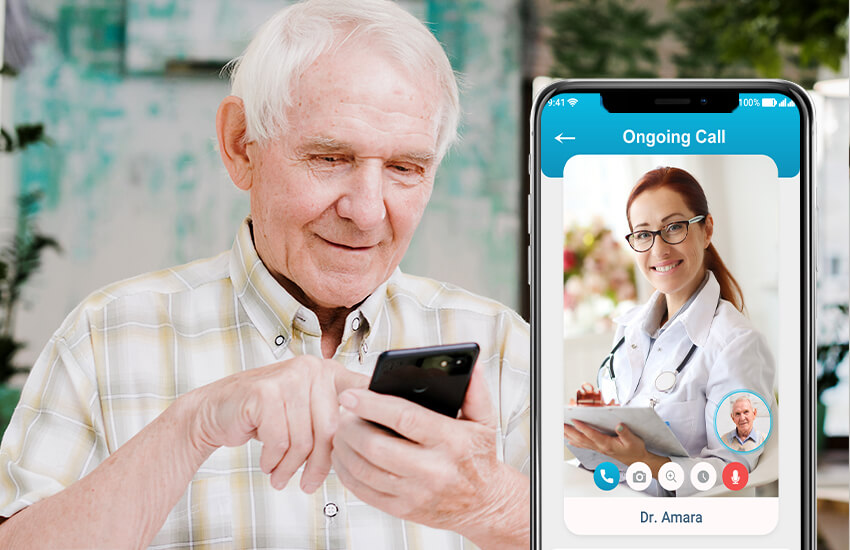
Besides, patient monitoring systems also offer specialized care to areas without access to specialty care. By enhancing access to care, removing linguistic and cultural barriers, enhancing chronic illness management, offering cost-effective care, and empowering patients via education and support, RPM solutions can solve health equity issues. Healthcare professionals can improve the health outcomes for all patients, regardless of socioeconomic level or background, by utilizing RPM technology.
Importance of RPM for Healthcare Providers
Healthcare organizations always strive to provide the best possible care to patients but are faced with many challenges. Telehealth systems can help to overcome some of these challenges, so let’s look at some of the pressing issues that remote patient monitoring solutions can address.
1. Improved Patient Engagement
The latest buzzword in the healthcare industry is “patient engagement,” and every medical facility and healthcare provider is consciously working to improve the patient care experience. Well, the good news is remote patient monitoring systems is one such tool that can bridge the current gap in patient engagement. RPMs capture and present patient data in easy-to-read and understand formats that make patients comfortable and more receptive to medical devices.

These systems also provideround-the-clock support to patients giving them greater control over theirhealth and sending timely notifications to help them stay on track.Additionally, patients feel assured as they receive continuous guidance andfeedback on their vital data from experts.
2. Reduction in the risk of Hospital Readmission
Hospital readmission rate is an important measure of the quality of a healthcare provider’s services. Remote medical monitoring and other telemedicine software systems can help providers reduce the risk of hospital readmissions and the resulting penalties. One example is the University of Pittsburgh Medical Center, which provided tablets and RPM devices to patients and observed a 76% reduction in the risk of hospital readmissions along with maintaining patient satisfaction scores over 90%.
3. Optimized Utilization Management
Insights gathered from wireless patient monitoring solutions assist doctors and nurses to chalk out well in advance the list of critical patients who need their attention and patients that can be managed remotely with less frequent visits. This leads to better management of resources and hospital bed occupancy.
4. Reduced Costs
And yes, who doesn’t want to save money? Remote medical monitoring systems can help providers reduce costs in several ways.
As the system connects all the care cycle parties – providers, payers, and patients – communication are faster, easier, and transparent, which can help prevent emergencies and indirectly lower costs.

Statistics show that almost 45 percent of the US population has at least one chronic disease. Remote patient monitoring systems focused on chronic illnesses can significantly reduce costs. According to a research report published by KLAS, 17% of the surveyed healthcare providers running chronic-disease centered RPM programs cited a reduction in costs.
5. Better Management of Chronic Conditions
By offering patients constant monitoring and individualized care, remote health solutions can aid in better managing chronic illnesses. Before things worsen, RPM solutions can identify early changes in a patient’s condition. It can offer individualized care programs that are made to meet the specific requirements of the patient.
Patients can get individualized advice on nutrition, exercise, and medicine, as well as real-time feedback on their state of health. RPM solutions can improve patient engagement by giving patients individualized feedback on their health state in real-time.
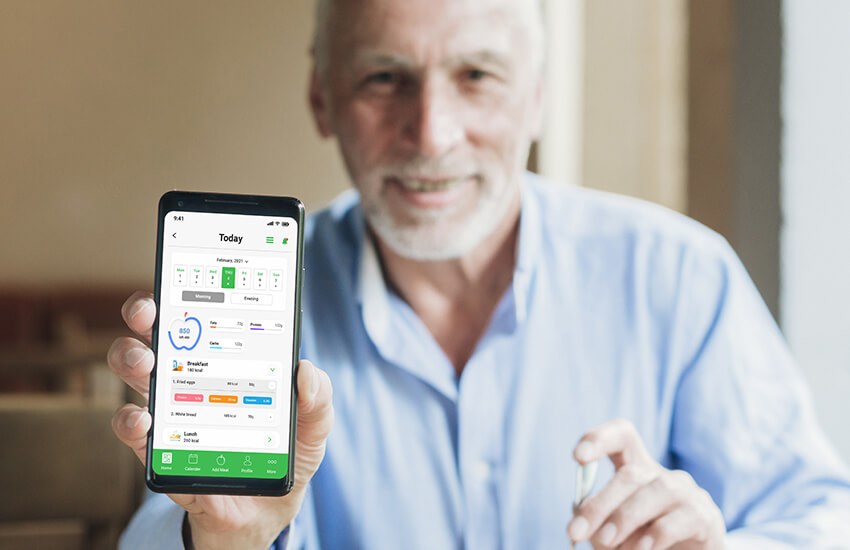
Patient’s motivation to control their conditions and adherence to treatment programs may increase if they feel more involved in their care. Also, reminding patients to take their prescriptions and tracking their medication use can increase medication adherence.
6. Decrease in Hospitalization
Patient monitoring systems can help reduce hospitalizations by taking a more proactive and continuous approach to patient care. RPM tools allow medical professionals to monitor patients remotely, giving them a heads-up on potential health problems before they worsen. This makes it possible for caregivers to step in before a patient’s condition worsens to the point where hospitalization is necessary.
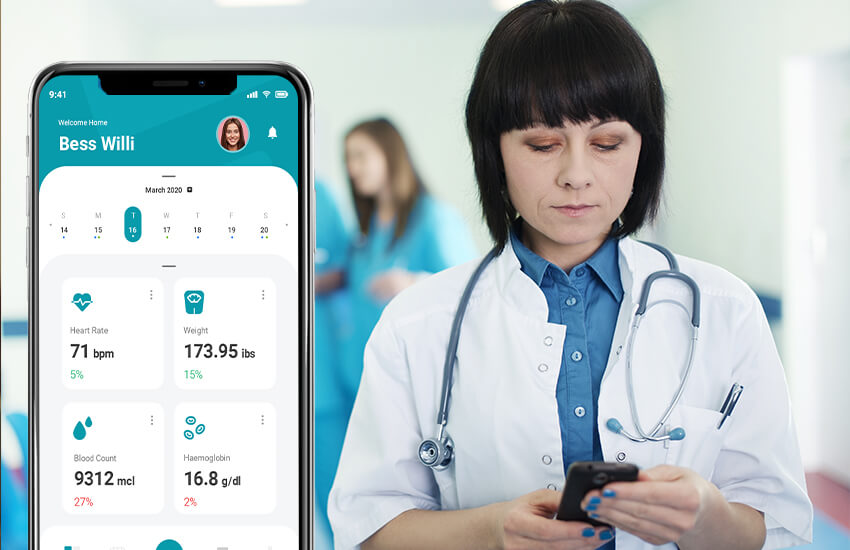
By offering continual monitoring and assistance after a patient leaves the hospital, RPM solutions can assist in lowering the number of readmissions to the hospital. This lowers the possibility of complications resulting in readmission and guarantees that patients get the treatment they require to recover.
7. Minimizes No-Shows
Appointment no-shows can be reduced in several ways with patient monitoring tools. RPM solutions can send automatic reminders and notifications to remind patients of impending appointments. Text messages, emails, or phone conversations are generally used for this. When you remind, patients are less likely to forget and miss their scheduled appointments.
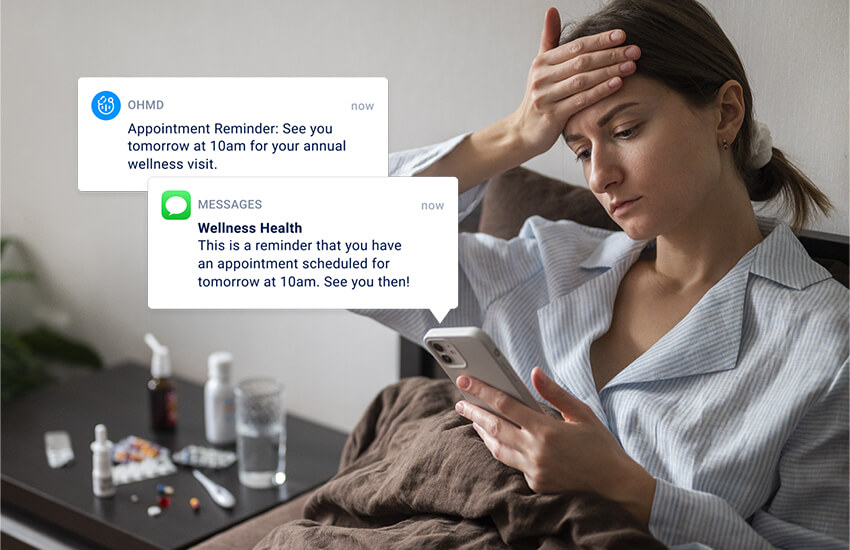
With the help of RPM solutions, patients can communicate with their healthcare providers in real-time, reschedule appointments, or seek support if they cannot make it. Patients benefit from feeling more involved in their care, and healthcare professionals can actively reschedule appointments rather than simply reporting no-shows.
8. Better Control Over Personalization
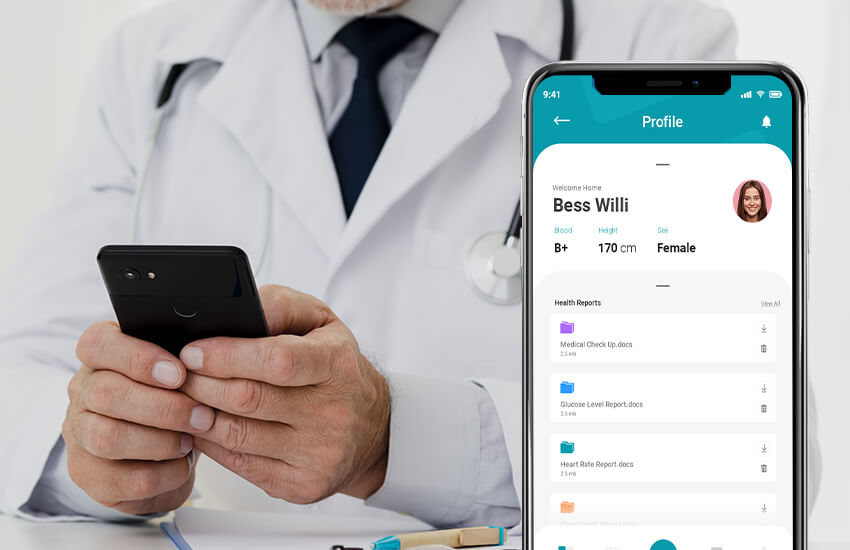
Remote patient monitoring solutions can monitor better control over care personalization by providing healthcare providers with real-time patient information and valuable insights. RPM solutions can give medical professionals in-depth knowledge about a patient’s health status, enabling them to design individualized care plans that cater to their particular requirements and preferences. By utilizing RPM solutions, clinicians must ensure patients receive the right care and treatment based on their needs.
Conclusion
There are considerable medical and financial benefits associated with RPM. According to a 2019 Spyglass Consulting report, 88% of healthcare systems have invested in or plan to invest in remote patient monitoring solutions as they look to transition to a value-based care model. RPMs can help healthcare providers gather critical patient data, efficiently manage utilization of staff and hospital capacity, improve patient care experiences, and increase their ROI.
OSP has helped healthcare providers in better predictability of life-threatening illnesses such as pneumonia and diabetes by building highly advanced remote monitoring systems offering integrated EHR systems, advanced data visualization, real-time data analytics, alerts and reminders and more.
Want to See it in Action?
Resources:
- https://www.healthcareitnews.com/news/remote-patient-monitoring-gain-big-momentum-2020
- https://www.grandviewresearch.com/press-release/global-remote-patient-monitoring-devices-market
- https://mtelehealth.com/heres-what-providers-need-to-know-as-rpm-is-poised-for-take-off-with-new-cms-rules/
- https://www.businessinsider.in/science/the-technology-devices-and-benefits-of-the-growing-remote-patient-monitoring-market/articleshow/68743063.cms
OSP is a trusted software development company that delivers bespoke solutions as per your business needs. Connect with us to hire the best talents in the industry to build enterprise-grade software.

How can we help?
Fill out the short form below or call us at (888) 846-5382
Looking for software solutions to build your product?
Let's discuss your software solutions for your product in our free development acceleration call!
Get In Touch arrow_forwardDiscuss Your Project Handover with a team of expert Book a free consultation arrow_forward
About Author

Written by Riken Shah linkedin
Riken's work motto is to help healthcare providers use technological advancements to make healthcare easily accessible to all stakeholders, from providers to patients. Under his leadership and guidance, OSP Labs has successfully developed over 600 customized software solutions for 200+ healthcare clients across continents.







